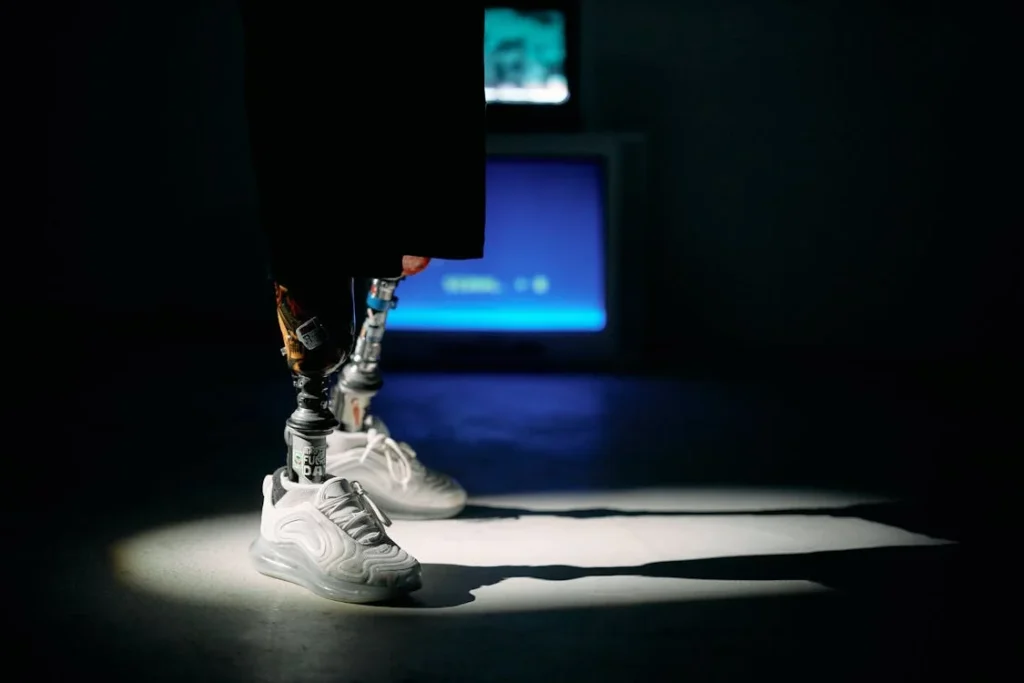When someone loses a limb, their world changes overnight. Daily tasks that were once second nature suddenly become big hurdles. It’s not just a physical change—it’s emotional, mental, and deeply personal. At Robobionics, we’ve seen this journey up close, time and again. And while every story is unique, one fact stands strong across all experiences: the timing of prosthesis fitting can make a massive difference in a person’s recovery and quality of life.
Let’s not beat around the bush—waiting too long to get a prosthetic limb can delay healing, drain motivation, and even cause long-term complications. On the flip side, timely fitting of a well-designed prosthesis can boost confidence, restore independence, and speed up both physical and emotional healing.
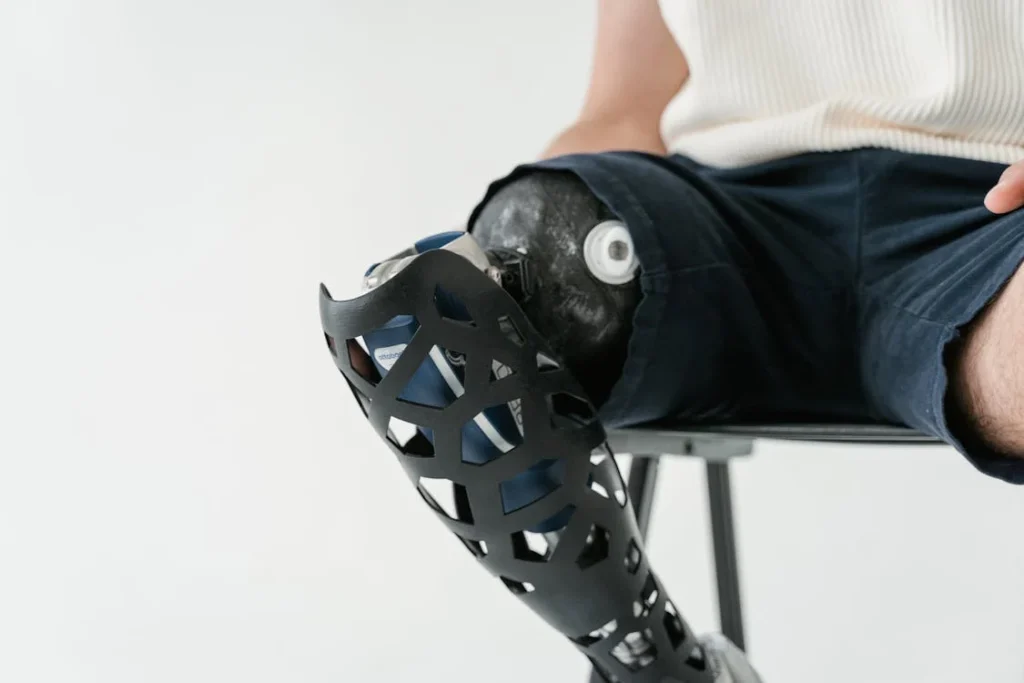
The Healing Timeline After Amputation
Recovering from an amputation is a journey that touches every part of a person’s life. The body, mind, and spirit all need time and support to adapt to this change.
But within that healing process, there are clear phases the body goes through—and these phases play a huge role in when and how a prosthesis should be fitted.
What Happens Right After Surgery
Immediately after an amputation, the body begins the healing process by forming a protective covering over the surgical wound. Doctors typically use a combination of soft dressings, rigid splints, or shrinker socks to protect the area and manage swelling.
This is a delicate time, as the body is still trying to recover from the trauma of surgery. Pain is expected, and so is emotional shock. People often feel lost, scared, or unsure about what comes next. This is completely normal.
During these first few weeks, one of the most important goals is reducing swelling and preventing infection. Keeping the surgical site clean and following medical advice closely are critical. Another key focus during this time is controlling the shape of the residual limb. This is not just about appearance—it directly affects how well a prosthesis will fit later on.
Shaping the Residual Limb
Many people don’t realize that the shape of the residual limb constantly changes in the weeks after surgery. As swelling goes down, the limb becomes smaller and begins to stabilize. However, it doesn’t do this on its own.
Patients are usually advised to wear compression garments or use specific bandaging techniques. These help the limb take on a conical shape, which is ideal for prosthetic fitting.
If the limb heals in an uneven or swollen way, it can make it very difficult to wear a prosthesis comfortably.
This shaping process is also where early involvement of a prosthetist becomes very valuable. They can assess the healing, recommend the right support, and begin planning for the future prosthesis.
Many people mistakenly believe that they must wait until the wound is completely healed to even begin discussing a prosthesis. This delay can often push recovery back by weeks or even months.
The truth is, the earlier a prosthetist becomes part of the team, the smoother and quicker the transition can be.
The Emotional Healing Phase
There’s no denying that the emotional toll of amputation can be just as significant as the physical recovery. It’s a moment in life when control feels lost. Grief, anger, sadness, and fear often arrive in waves.
And while there is no timeline for emotional healing, what often helps is regaining a sense of normalcy. That’s where timely prosthesis fitting becomes more than just a medical concern—it becomes an emotional turning point.
When someone begins to walk again, or even just stand up with a prosthesis, something shifts inside. They begin to feel hope. They begin to see the future again. But the longer that first fitting is delayed, the harder it can be to hold on to that hope.
Doubt can creep in. Motivation can fade. Depression can take root. This is why we strongly believe that physical and emotional healing should not be treated separately. A timely prosthesis fitting bridges the two.
When Is the “Right” Time to Get Fitted?
Every patient is different, and there’s no one-size-fits-all timeline. But in general, most prosthetists and rehabilitation specialists agree that the ideal time to begin the fitting process is between four to eight weeks after surgery.
This is often when the wound has healed enough to safely begin measurements and fitting for a temporary or preparatory prosthesis.
Waiting too long beyond this window can lead to muscle atrophy, joint stiffness, and psychological disengagement. On the other hand, rushing the process before the wound has healed can cause further injury and delay recovery.
The sweet spot is a balance—letting the body heal just enough, while not allowing too much time to pass before beginning prosthetic integration.
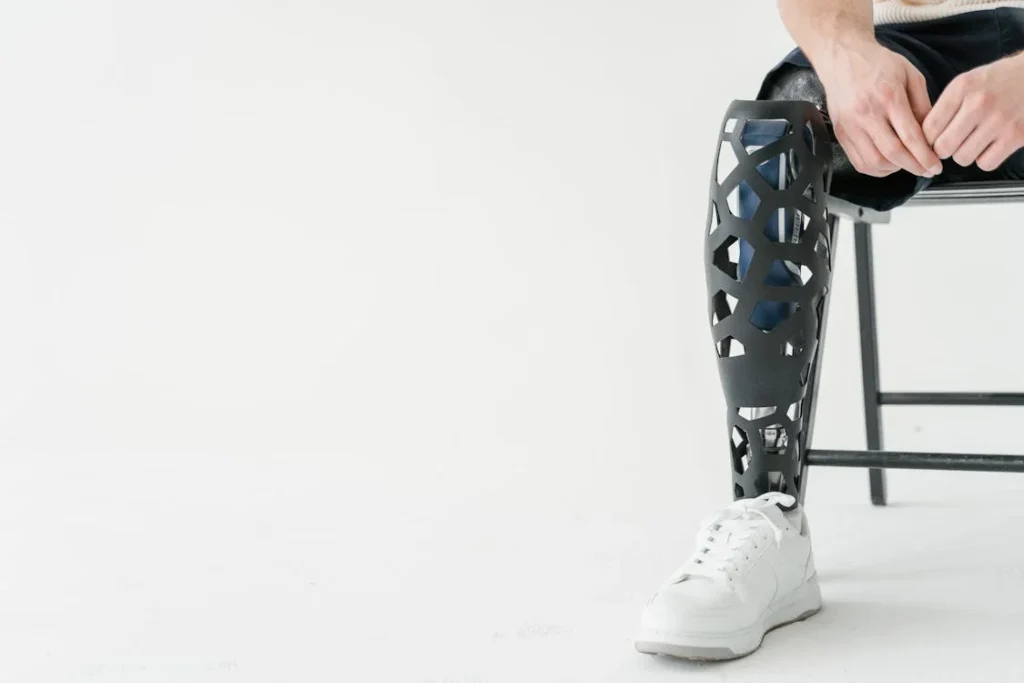
The Dangers of Delaying Prosthesis Fitting
Time is not just a number when it comes to prosthesis fitting—it’s a powerful factor that can either work for you or against you. Many people don’t realize that postponing the prosthetic journey doesn’t just delay walking—it can actually cause a chain reaction of physical and mental issues that grow more difficult to fix over time.
Muscle Weakness and Loss of Mobility
Our bodies are designed to move. The moment we stop using certain muscles, they begin to weaken. After an amputation, the body already undergoes stress as it adapts to a new way of existing.
Without a prosthesis, the remaining muscles on both sides of the body are forced to compensate in unhealthy ways. The side that no longer has the limb may experience rapid muscle shrinkage, while the other side may become overworked.
As time passes without the support of a prosthesis, even the strongest muscles lose strength. The longer someone waits, the harder it becomes to regain balance and coordination.
It’s like trying to climb a hill that gets steeper every day you delay. Eventually, even walking with support like crutches or a walker becomes exhausting, and that discourages movement altogether.
This inactivity leads to a vicious cycle—less movement leads to more weakness, which leads to more fear of movement. The body then begins to forget how to move efficiently, making the later transition to a prosthesis much harder than it needed to be.
Joint Stiffness and Contractures
When a joint stays in the same position for too long, it can stiffen. This is a natural response from the body to immobilization. After amputation, many people feel safer staying in bed or sitting for long periods, especially if they’re in pain or emotionally overwhelmed.
But doing so without proper stretching or therapy can cause joints—especially knees and hips—to become locked in a limited range of motion.
This condition, known as a contracture, can be very difficult to reverse. If a knee remains slightly bent for too long, it may not fully straighten again.
And a straight leg is necessary for fitting a prosthetic limb correctly. Once a contracture sets in, additional physical therapy, stretching, and sometimes even surgery may be required to correct it.
Prosthetists often encounter patients who waited months to begin the process, only to discover that their joints have become too stiff to accommodate a prosthesis easily.
These complications are not just painful—they are preventable. Early movement, guided exercises, and beginning prosthesis fitting at the right time can keep the body flexible and ready.
Changes in Limb Shape
The residual limb doesn’t just shrink in size as healing progresses—it also changes shape. Right after surgery, the limb is swollen and uneven.
Over time, with proper care and compression, it starts to take on a smooth, conical shape. But if compression therapy is delayed or neglected, the limb may heal in an irregular way.
A poorly shaped limb can cause significant challenges during prosthesis fitting. Uneven or bulbous areas may create pressure points when inside the prosthetic socket.
This leads to discomfort, skin breakdown, and even open sores. Adjusting a prosthesis around a misshapen limb often requires more time, more fittings, and sometimes even revision surgery.
Delaying the fitting process increases the risk of the limb healing in a way that is not compatible with a comfortable or stable prosthesis. This not only delays mobility but may also affect long-term comfort and independence.
Mental and Emotional Setbacks
The psychological impact of delaying prosthesis fitting is often underestimated, but it can be just as serious as physical consequences. After an amputation, the human mind goes through a rollercoaster of emotions.
In the early stages, there’s often shock and sadness, followed by anger or denial. Over time, many people experience grief, which is a natural response to such a life-changing loss.
What helps many amputees cope and move forward is the feeling that they are working toward something better. That’s where timely prosthesis fitting plays a crucial role.
The moment they see themselves stand, walk, or even just wear the limb, something shifts internally. They begin to imagine what life could look like again.
But when this fitting is delayed, that spark of hope can fade. Many people begin to lose motivation. Some stop attending rehab or therapy altogether. Others isolate themselves or fall into depression.
The feeling of being stuck or forgotten takes over, and bouncing back from that mindset becomes more difficult as the days pass.
Early prosthesis fitting does not guarantee perfect mental health—but it provides direction. It gives people a goal, a sense of progress, and something to look forward to. And that kind of mental resilience is just as important as physical strength.
Long-Term Financial Costs
It might seem surprising, but delaying prosthesis fitting can also increase overall expenses. When someone delays getting a prosthesis, they often require more medical interventions—physical therapy for joint issues, extra rehab for muscle reconditioning, or even corrective surgeries. The longer the delay, the more likely complications become, and each complication adds to the cost.
Additionally, prolonged immobility can lead to other health issues such as poor circulation, pressure sores, or weight gain—all of which may require medication or medical attention. On top of that, psychological support or counseling might be needed due to mental health setbacks.
Starting the prosthetic journey on time not only improves health outcomes but can also reduce long-term costs significantly. It shortens the road to independence, allowing people to return to work, hobbies, and everyday life sooner.
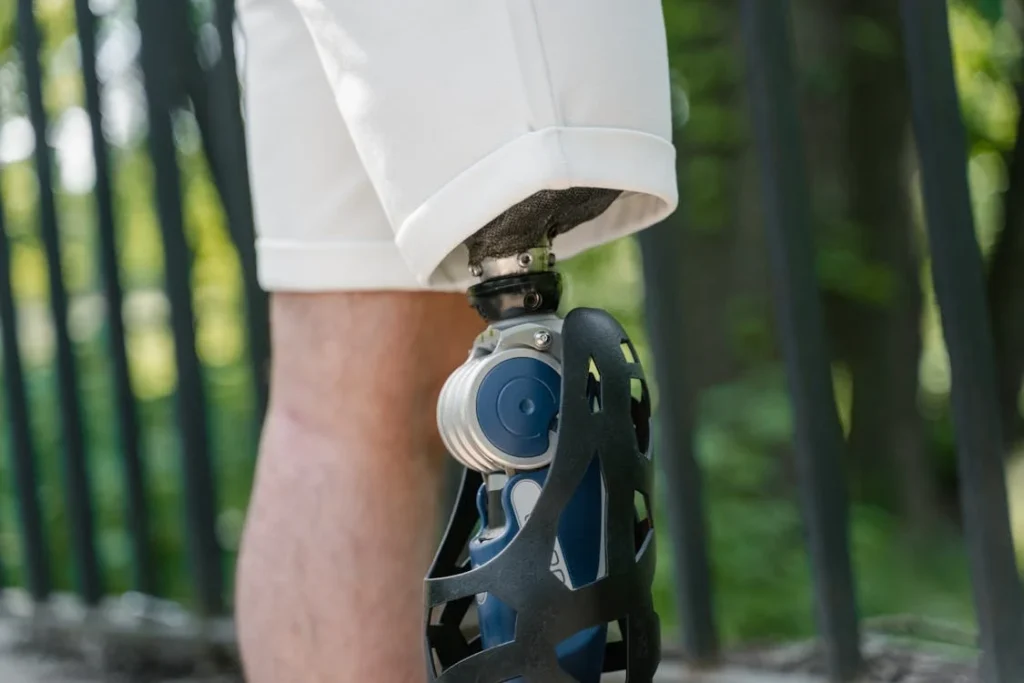
Benefits of Early Prosthesis Fitting
When it comes to prosthetics, timing is not just helpful—it’s transformative. Getting fitted early doesn’t just mean walking sooner. It means healing better, faster, and more completely.
It’s about rebuilding a life that feels full, independent, and dignified. The advantages of early prosthesis fitting ripple through every area of a person’s life—physical, emotional, social, and even financial.
Faster Physical Recovery
The body thrives on movement. Once the surgical site is healed enough, getting fitted for a prosthesis helps keep the body active and engaged. Muscles stay strong because they are being used.
Joints remain flexible because they are being moved. The cardiovascular system gets a boost from increased mobility. The core strengthens, balance improves, and posture becomes steadier.
All these benefits work together to create a more stable body. The sooner a prosthesis becomes part of daily life, the sooner a person’s entire body adapts to new movements.
This speeds up overall rehabilitation and makes physical therapy more effective. Instead of just exercising with limited motion or lying in bed, the body begins to work as a whole again.
And because the prosthesis becomes part of the movement pattern early on, the brain quickly learns how to integrate it. This is called proprioception—our body’s sense of where it is in space—and it’s easier to develop when the prosthesis is introduced before unhealthy compensation habits set in.
Better Limb Shaping and Socket Fit
As mentioned earlier, the shape of the residual limb is constantly changing during the first few weeks after surgery. Starting the fitting process early means that prosthetists can guide this shaping in real-time.
They can make adjustments to the socket and alignment as the limb matures, ensuring a snug and comfortable fit.
This adaptive process not only results in better comfort but also prevents long-term skin problems. A well-fitting prosthesis reduces the risk of pressure points, rubbing, or skin breakdown.
It also reduces the likelihood of needing multiple socket revisions in the future. Early fittings often start with a temporary prosthesis, which can later be upgraded to a permanent one once the limb size has stabilized.
The overall outcome? A better, more personalized fit that supports mobility instead of working against it.
Faster Return to Daily Activities
One of the biggest joys after getting fitted with a prosthesis is the return to everyday life. Walking across a room. Standing at the kitchen counter.
Getting in and out of a car. Holding your child’s hand while walking down the street. These are not just physical acts—they are emotional victories. And early fitting makes these wins come sooner.
When fitted early, individuals are able to start doing things for themselves much faster. They can cook, clean, commute, and care for themselves without depending on others all the time. This independence rebuilds self-esteem. It gives people back their sense of control.
The quicker someone gets back to these routines, the more normal life feels. There’s less risk of falling into habits of isolation or helplessness. Life begins to move forward again—and not just at a crawl, but with energy and purpose.
Emotional Strength and Mental Focus
It’s not easy to stay hopeful after losing a limb. But when you see real progress—when you stand, walk, or move without help—it changes your perspective. Early prosthesis fitting delivers that moment much earlier. It turns fear into action. It replaces despair with determination.
Emotionally, this can be the turning point in recovery. The mind becomes sharper, more focused. There’s a goal to work toward, and every day brings a small achievement.
People who get fitted early often report feeling more confident, more socially connected, and less anxious. They’re more likely to engage in therapy, stay active, and rejoin their communities.
This mental resilience also boosts physical healing. Studies have shown that patients with a positive mindset recover faster, experience less pain, and are more cooperative in rehab. It’s all connected. And early fitting plays a crucial role in setting this in motion.
Stronger Social and Work Reintegration
One of the toughest parts of post-amputation life is feeling like an outsider—at home, in the community, or at work. Friends and colleagues may not know how to react.
Some people hesitate to go back to social gatherings or resume their jobs because they don’t want to face stares, questions, or sympathy.
Getting a prosthesis early helps restore a sense of identity. It shows others that you are moving forward. It changes the way people interact with you—from pity to respect. When you walk into a room upright and self-assured, you set the tone for how others will respond.
Early fitting also opens the door for returning to work or school faster. It removes the barriers that often delay these important life steps.
Whether it’s standing for long hours at a shop, managing a desk job, or even walking through a college campus, a prosthesis fitted at the right time makes all the difference.
It’s not just about looking whole. It’s about feeling whole—and showing the world that you’re still in control of your life.
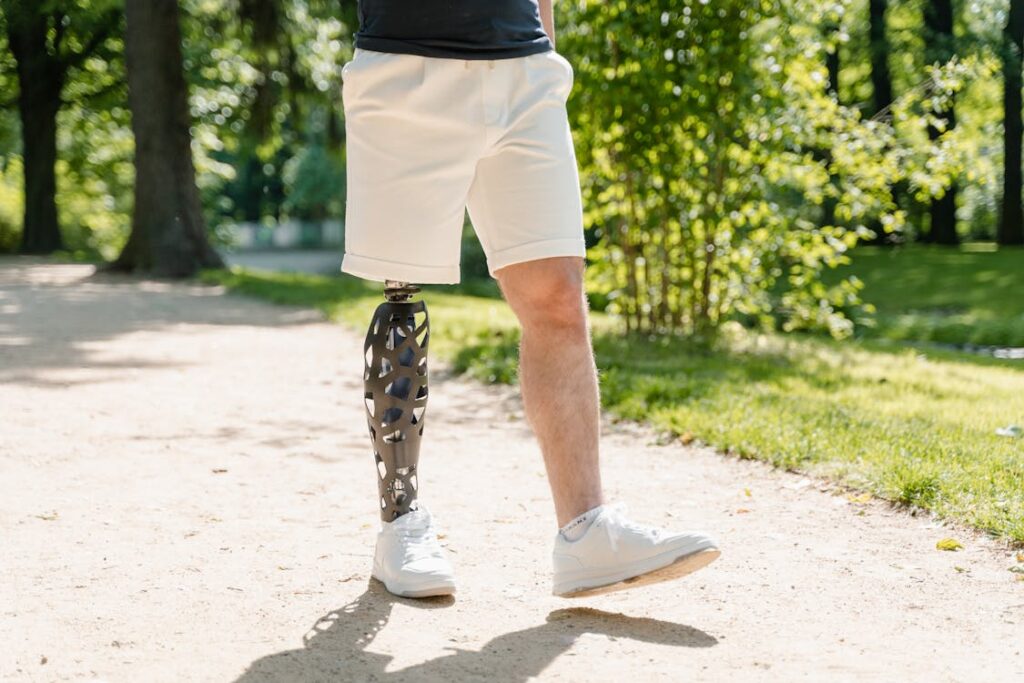
How the Fitting Process Works—Step by Step
Understanding how a prosthesis is fitted helps take away some of the fear and mystery that often surrounds this process. People tend to think it’s complicated or painful, but in reality, it’s a series of well-planned, supportive steps—each designed to help the person regain their independence and comfort.
At Robobionics, we’ve refined this process through years of experience, always keeping the individual’s needs at the center.
Initial Consultation and Limb Evaluation
Once the surgical site has healed enough, typically around four to eight weeks after amputation, the process begins with a thorough evaluation. A prosthetist—who is a trained professional in artificial limbs—assesses the condition of the residual limb.
They look at the shape, skin quality, range of motion in nearby joints, and muscle tone. They also talk to the patient about their lifestyle, goals, and any specific challenges they may face.
This isn’t just a technical check-up. It’s a chance for the patient and prosthetist to build trust. A good prosthetist listens carefully and explains each step so that the person feels informed, included, and confident.
If the limb is not quite ready—say, if there’s still swelling or skin irritation—the prosthetist will guide the patient through exercises, compression therapy, or wound care routines that help prepare the limb for fitting.
Taking a Precise Measurement
Once the limb is ready, the next step is capturing its exact shape and dimensions. This is usually done through a process called casting.
A soft, fast-drying material—often similar to what’s used for making orthopedic casts—is wrapped around the limb. This mold captures every contour, dip, and curve.
Some clinics, including ours, also use digital scanners that create a 3D image of the limb. This modern method is quick, comfortable, and incredibly accurate. It helps in designing a prosthetic socket—the part that connects directly to the residual limb—that fits like a glove.
The accuracy of this step is crucial. A well-fitted socket distributes body weight evenly, reduces pressure points, and ensures that the limb doesn’t slide or rub inside the prosthesis. It’s the foundation for everything that follows.
Designing the Prosthesis
After the shape is captured, the prosthesis is designed. This includes selecting the right socket material, the type of suspension system (which keeps the limb in place), and the mechanical components that make up the foot, knee, or hand.
The choice of components depends on many factors—whether the patient is young or elderly, active or sedentary, working or retired.
Someone who loves trekking needs different components from someone who works in an office. At Robobionics, we customize every detail based on how the individual plans to live, not just how they walk.
For many first-time users, a temporary or preparatory prosthesis is created. This version is lighter, slightly simpler, and designed to help the patient start moving safely while the limb is still changing shape. Once the limb stabilizes, usually after a few months, the final prosthesis is crafted.
Initial Fitting and Alignment
Once the temporary prosthesis is ready, it’s time for the first fitting. This is an exciting moment—often emotional. The individual stands, sometimes for the first time since surgery. Even if the step is small, the emotional weight is big. Hope, pride, and sometimes tears fill the room.
But this stage is not just about standing. It’s about fine-tuning. The prosthetist checks for pressure points, skin reactions, and alignment. They look at how the prosthesis moves with the rest of the body—how it affects walking posture, balance, and weight distribution.
Adjustments are made on the spot or during follow-up visits. Padding may be added or removed. Straps might be tightened or repositioned. Even a small misalignment can cause discomfort, so attention to detail here is key.
Learning to Walk Again
Walking with a prosthesis isn’t just physical—it’s a mental process too. The brain has to learn how to trust the new limb. The body has to learn how to balance differently. Most patients begin with parallel bars, then move on to walking with assistance, and eventually without help.
During this time, physical therapists work alongside the prosthetist. They guide patients through exercises that build strength, improve gait, and increase confidence.
The focus is not just on the prosthetic leg or arm—but the whole body. Core strength, hip movement, coordination, and stamina all play a role.
For some people, walking may come naturally within days. For others, it may take weeks of consistent practice. There is no fixed timeline. The key is persistence, encouragement, and expert guidance.
Adjusting to Daily Life with the Prosthesis
After initial training, the focus shifts to real-world use. The individual starts wearing the prosthesis for longer periods—starting with a few hours and gradually increasing. They begin walking on different surfaces, navigating stairs, and performing daily tasks.
This phase also involves learning how to care for the limb. Patients are taught how to clean the socket, inspect the skin for irritation, and use socks or liners correctly. Regular follow-ups are scheduled to address any discomfort or adjustments needed.
Sometimes, psychological support is offered during this time. This could involve counseling, peer support groups, or one-on-one chats with others who’ve been through the same journey. Talking to someone who has already “walked the walk” can make the path feel less lonely.
The prosthetist stays in close contact during this stage. They’re not just technicians—they’re partners in recovery. They listen, guide, and tweak the device as the person becomes more active and adventurous in their use of it.
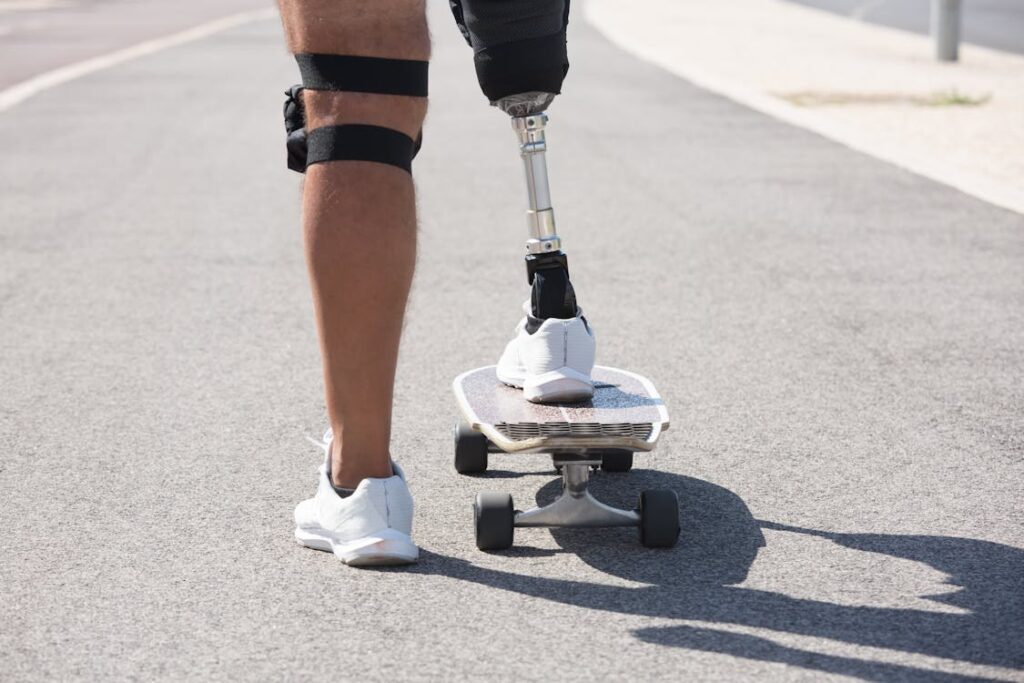
What to Expect Emotionally During the Fitting Journey
While the physical changes after an amputation are visible, the emotional changes are often hidden beneath the surface. The journey of prosthesis fitting isn’t just about measurements, molds, or mechanics. It’s also about facing a new identity, rebuilding confidence, and finding a way back to life with dignity.
Every stage in the fitting process brings emotional shifts—some gentle, some intense—but all part of a very human experience.
The Initial Emotional Struggle
Right after surgery, emotions often swing like a pendulum. One moment there’s hope, the next there’s hopelessness. For some, the idea of using a prosthetic limb feels empowering.
For others, it brings a deep sense of loss. People often find themselves grieving not just the lost limb, but the version of life they had before.
There can be a lot of fear—fear of pain, fear of not walking again, fear of being judged. Some worry they’ll never feel “normal” again. Others dread the thought of being dependent on others.
These feelings are real and valid. What matters most is recognizing that this emotional storm is part of the healing. It’s not a sign of weakness. It’s part of being human.
Having a strong support system at this stage—family, friends, and medical professionals—can make all the difference. A kind word, a patient listener, or a hug at the right moment often matters more than any medicine.
Feeling Nervous at the First Fitting
The first fitting is often filled with mixed emotions. Many patients are excited to start walking again but also nervous. Will it hurt? Will it look strange? Will I be able to balance? Will people stare at me? These are natural thoughts, and most people feel them.
It’s important to remember that this step is the beginning, not the end. It doesn’t need to be perfect on the first try. At Robobionics, we encourage our patients to speak openly during this stage.
We want them to tell us what feels good and what doesn’t, so we can make the right adjustments. But beyond that, we also listen to what they’re feeling—not just physically, but emotionally.
Sometimes just standing up again brings tears. Not because of pain, but because of pride. It’s a reminder that life hasn’t stopped—it’s just changing direction.
The Boost from Small Wins
Once walking begins, there’s a shift in mindset. People start feeling like themselves again. The first step, the first walk to the kitchen, the first trip outside—all these moments are deeply uplifting. They remind the person that their body can still support them. That their future is still theirs.
These wins are not just physical—they are deeply emotional. They bring back laughter. They reduce anxiety. They create momentum. Even the smallest tasks, like putting on the prosthesis without help, bring a renewed sense of purpose.
We often see patients become more talkative, more open, and more engaged with others during this time. They begin to plan things again—family events, vacations, work goals. These are signs of emotional healing that are just as powerful as any X-ray or medical test.
Setbacks and Frustrations Are Normal
Not every day is easy. Some days the prosthesis might feel heavy. Some days there might be pain or discomfort. And there will definitely be moments of frustration—when progress feels slow, or a certain movement just won’t come together.
Setbacks are part of the journey. What’s important is not letting them define the journey. At Robobionics, we remind patients that it’s okay to rest, okay to feel tired, and okay to need time. Healing doesn’t follow a straight line. It’s full of curves, dips, and climbs.
When these hard days come, having someone to talk to—a family member, therapist, or fellow amputee—can help lighten the emotional load. Just saying, “I’m having a tough day,” can open the door to relief.
Building a New Sense of Self
Over time, the prosthesis becomes part of daily life. The person stops thinking about it as a tool and starts seeing it as an extension of themselves. This shift is both physical and emotional. It means that acceptance is happening.
They may still remember the life they had before amputation, but they no longer feel stuck there. They now think about what they can do next. Hobbies return. Social events feel less stressful. Many even take up new interests—sports, public speaking, travel, mentoring others.
This is the point where emotional healing really shines. Confidence returns, not because everything is easy, but because the person has learned they can handle the hard parts. They know they are capable. They know they are strong.
And that strength becomes something they carry with them—not just in the way they walk, but in the way they live.
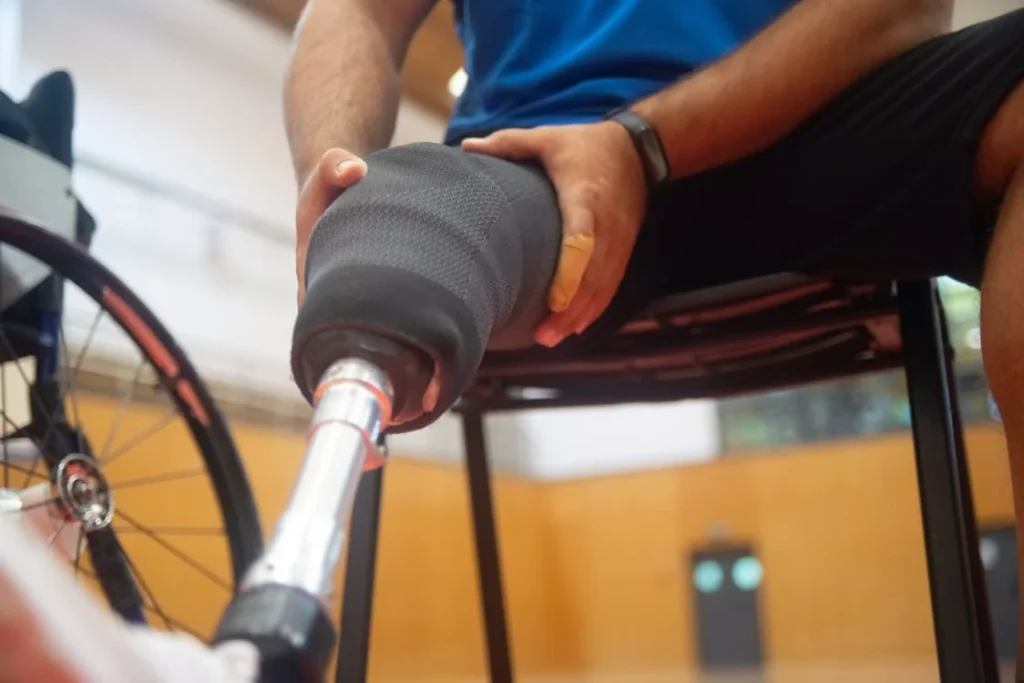
How to Prepare for Your Prosthesis Fitting (Physically and Mentally)
Being prepared for your prosthesis fitting can make the process smoother, faster, and much more comfortable. It doesn’t mean you need to be perfectly healed or emotionally strong every single day.
But being aware of what’s coming, and taking small, steady steps toward it, can change the experience from something scary to something empowering.
At Robobionics, we believe in walking beside our patients—not just fitting a device, but helping them shape the life that follows. That journey begins with good preparation.
Start with Honest Conversations
Preparation begins long before stepping into a prosthetist’s office. It starts with open and honest conversations—with your doctor, your physiotherapist, your family, and most importantly, with yourself.
Talk about your fears, your goals, and your questions. Don’t hold anything back. The more your care team understands your mindset, the better they can support you.
This is also the time to begin connecting with a prosthetist, even if you’re not ready for a fitting just yet. They can answer your questions, explain what to expect, and guide you through the preparation phase.
Some people delay these conversations out of fear or confusion, but early engagement builds confidence and reduces anxiety.
Take Care of the Residual Limb
Your prosthesis can only fit as well as your limb allows it to. Taking good care of the residual limb is one of the most important parts of preparation.
This includes keeping the skin clean, inspecting it daily for signs of irritation or infection, and following all care instructions from your doctor.
Swelling is a natural part of the healing process, but managing it effectively makes a huge difference. Compression garments or bandaging help shape the limb and reduce swelling over time.
Use them as prescribed. Don’t skip days just because things look “good enough.” Consistency here builds the foundation for a smoother fitting later.
Massaging the residual limb also helps desensitize the area and improve blood flow. This makes the skin tougher, reduces discomfort during fitting, and helps your body adjust to wearing a prosthesis.
Practice Mobility and Strength Exercises
You don’t need to be an athlete to use a prosthesis, but your body does need a certain level of strength and flexibility. Physical therapists will often recommend exercises to strengthen the muscles around the amputation site, especially your core, hips, and opposite limb.
These exercises may feel tiring at first, but they serve a big purpose. They prepare your body for balance, support, and mobility once the prosthesis is in place.
Even small routines—like lifting your leg, stretching your hips, or sitting upright without support—can build strength and confidence.
Movement also keeps your joints flexible. If your knee or hip becomes too stiff, it can complicate the prosthetic fitting process. The more you move (safely), the more your body stays ready.
Prepare Mentally for a New Beginning
It’s completely normal to feel overwhelmed at the thought of wearing a prosthesis. Many people worry about how it will feel, how others will react, or whether they’ll ever feel “normal” again. These thoughts are not a sign of weakness. They are a sign that you care about your future.
One of the best ways to prepare mentally is to visualize success—not perfection, just progress. Picture yourself standing, walking, or even just balancing with support. Imagine feeling steady, secure, and in control.
This kind of mental rehearsal trains the brain and makes the physical process feel less foreign when it starts.
If possible, talk to someone who’s been through the journey. Peer support is powerful. Hearing how others navigated their own fears and found strength can inspire you to keep going.
Many of our patients say that one conversation with a fellow amputee changed their entire outlook.
Journaling can also help. Write down your feelings, your progress, your frustrations. It’s not just therapeutic—it’s a record of how far you’ve come. And on days when progress feels slow, you’ll be able to look back and remind yourself of everything you’ve already overcome.
Set Realistic Expectations
Prosthesis fitting is a process, not a one-time event. It may take a few fittings to get the perfect socket. You might need time to get used to the weight or feel of the device. You might stumble a bit at first. All of this is normal.
Going in with the mindset that every step is a learning opportunity—not a failure—sets you up for success. There will be adjustments, both on the device and in your own expectations. Be patient with yourself. Your body is learning something new. Give it time.
Communicate openly with your prosthetist. If something feels off, say it. If something feels good, say that too. They’re here to work with you, not on you. Your feedback helps them tailor the device to your unique needs.
Involve Your Support System
Whether it’s a spouse, a sibling, a parent, or a close friend, having someone by your side during this journey helps more than words can say. Invite them to appointments. Share your worries and your wins. Let them be part of the process.
Support doesn’t always mean advice. Sometimes it’s just having someone to sit beside you in the waiting room, or someone who reminds you how far you’ve come when you’re having a hard day.
If you don’t have a strong support system around you, reach out to a hospital counselor or prosthetics clinic. Many centers, including ours, have programs that connect patients to volunteers, mentors, or social workers. No one should have to go through this alone.
Conclusion
Timely prosthesis fitting is not just about getting back on your feet—it’s about reclaiming your life. When the fitting process begins at the right time, it sets everything in motion: healing, strength, confidence, and hope. It reduces complications, improves mobility, and allows individuals to return to their daily routines with dignity. More importantly, it builds momentum at a time when every step forward counts.
At Robobionics, we’ve seen how early intervention can transform lives. We’ve walked beside people who started this journey uncertain and afraid, and watched them grow into strong, independent individuals with purpose. Every journey is personal, every recovery unique, but the foundation is always the same—support, timing, and trust.
If you or someone you love is facing life after amputation, don’t wait. Start the conversation. Meet your prosthetist. Take that first step, even if it’s just a question. The right time is now, because every moment matters when you’re building a future worth walking toward.



